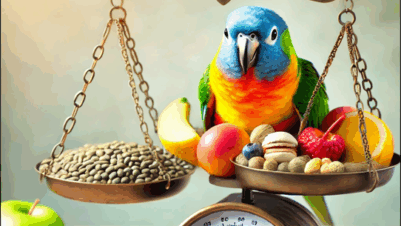
What should a practitioner do when a client brings a new puppy or kitten into the surgery and announces their intention to feed it a vegan diet?
Dr Andy Wales from the Surrey veterinary school offered some tips for colleagues in a presentation on unconventional diets at the inaugural BVA Live in Birmingham on Thursday 23 June 2022. He argued that there was little evidence to support the claims made by proponents of vegan or raw food diets that they are healthier alternatives to conventional commercial dog and cat foods. Indeed, he said that there was considerably more information on the potential hazards of these food “fads”.
However, Andy warned that issues involving food carry an “emotional charge” for many pet owners. It would be unwise to tell someone that they are misguided in their choices of diet for their pets as it is likely that the client will no longer listen to advice. “Vets should seek to influence but not to control the client’s decisions,” he said.
It would be unwise to tell someone that they are misguided in their choices of diet for their pets as it is likely that the client will no longer listen to advice
It is crucial to acknowledge that in making these choices, the client will be acting in good faith. Vets and vet nurses must try to be well informed and up to date on pet nutrition to be able to answer clients’ questions. But “while it is important to have a few facts up your sleeve, don’t overwhelm them with so much detail that it prevents a proper conversation,” said Andy. Also, it is particularly important to explain the changing dietary requirements at different stages of the pet’s life and to emphasise the need for a fully balanced diet during particularly vulnerable periods like puppyhood or kittenhood and during pregnancy.
He told colleagues that they should accept that clients will not always be open to persuasion on changing their feeding practices, but practitioners should make a note in the pet’s clinical records on the recommendations made. The one exception was in the case of clients wanting to provide homemade vegan diets for their pets, in which case the vet should push back strongly. This is because it is very unlikely that the client will have sufficient understanding of canine or feline nutrition to prepare a properly balanced ration, so there is a substantial risk of them causing harm to the pet, he warned.
Andy acknowledged that nearly all the essential dietary components normally obtained from animal tissue could be replaced by alternative sources. However, it is a challenge even for commercial companies to secure regular consistent supplies of each nutrient.
There are still major question marks over the safety and suitability of vegan and raw food diets for companion animals
He also said there are still major question marks over the safety and suitability of vegan and raw food diets for companion animals because the companies producing commercial products are usually small businesses. This means they do not have the scientific expertise to carry out tests on micronutrient concentration and bioavailability or the financial resources to conduct long and costly feeding trials.
Where studies have been carried out, Andy had considerable doubts about their scientific quality. He cited a series of papers by researchers at the University of Helsinki which claimed to show that puppies given a raw food diet had a lower incidence of gastrointestinal and dermatological disease as adults. However, he criticised the design of a study that used a self-selecting group of pet owners who had responded to requests to complete an online questionnaire, as this was likely to introduce biases that would skew the results. The other main flaw was that the Finnish researchers relied on the owner’s assessment of their pet’s health rather than a proper veterinary examination.

In contrast, there is a sizeable body of literature on the potential risks of feeding a raw meat diet to pets. Samples of commercial raw pet foods consistently found evidence of contamination with major zoonotic pathogens such as Salmonella, Listeria and Escherichia coli, which are rarely found in conventional processed dog foods. Any bacterial contamination present on the carcasses used in the product must be killed by cooking or irradiation, as organisms such as Salmonella spp are largely unaffected by the process of freezing and thawing, he noted.
Salmonella may be more likely to cause disease in the owner rather than the pet itself, but incidents of food-borne canine salmonellosis do occur – one incident in Brazil affected 45 dogs, including two fatalities. Andy believes that the frequency of disease in both humans and dogs is likely to be significantly underestimated as public health officials are only interested in large-scale outbreaks of disease, and the majority of sporadic cases will not be properly investigated. There is also a risk that other less common zoonotic pathogens transmissible in raw pet foods, such as Yersinia, Brucella and Cryptosporidium, will go unnoticed.
Another issue likely to affect pets receiving unconventional diets will be nutrient deficiencies if there is little or no effort to carry out proper quality control. Owners who give their pets a static diet containing the same products every day will be most at risk. So, there are specific dangers for groups such as indoor cats as they will be unable to hunt or scavenge food from neighbours to remedy any deficiencies in their diet, observed Andy.










